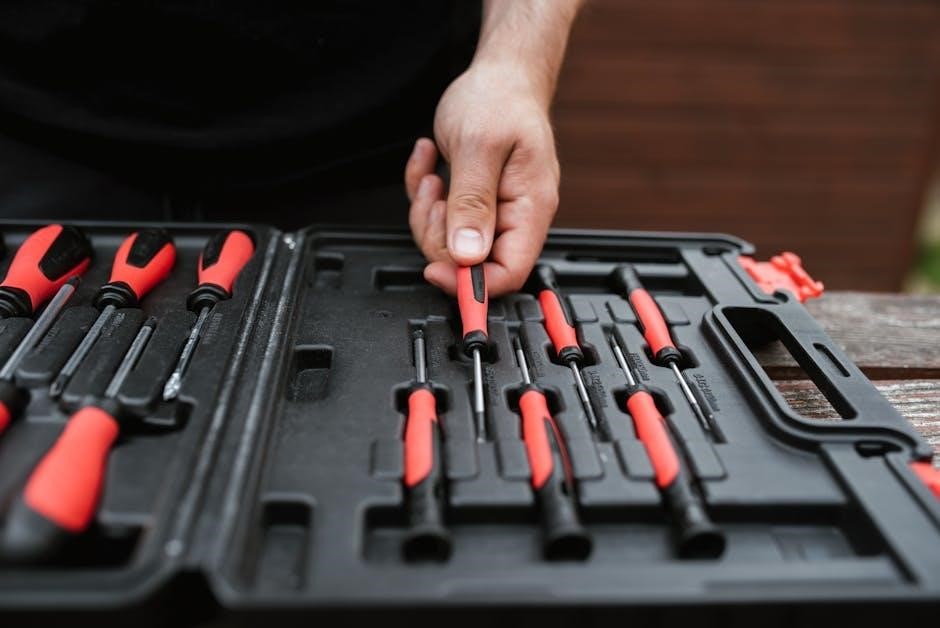Differential sizes vary with the 3.90 diff size being standard on manual Scat Pack and SRTs with 230mm axles and a ratio of 3.90 for optimal performance always.
Understanding the Basics of Differential Ratios
Differential ratios are a crucial aspect of a vehicle’s performance, and the 3.90 diff size is a popular choice for manual transmission vehicles, including the Dodge Challenger. The ratio of 3.90 refers to the number of rotations of the ring gear for every one rotation of the driveshaft. This ratio is designed to provide optimal performance and traction for the vehicle. In the case of the Challenger manual, the 3.90 diff size is standard on Scat Pack and SRT models, and is paired with 230mm axles. The differential ratio is an important factor in determining the overall performance of the vehicle, and the 3.90 ratio is well-suited for high-performance applications. By understanding the basics of differential ratios, drivers can better appreciate the capabilities of their vehicle and make informed decisions about upgrades and modifications. The 3.90 diff size is a key component of the Challenger’s performance package.

Dodge Challenger Differential Options
Available options include the 3.90 LSD rear differential, a factory standard on Scat Pack and SRT models with manual transmissions always using specific axle sizes.
Available Rear Axle Ratios for Different Models
The Dodge Challenger has various rear axle ratios depending on the model and transmission type, with options including 2.62, 3.09, 3.70, and 3.90, each designed for specific performance requirements.
The 3.09 ratio is commonly found in 8-speed automatic transmission models, while the 3.70 and 3.90 ratios are often paired with manual transmissions for enhanced acceleration and traction.
Additionally, the SRT Hellcat model features a 3.70 ratio asymmetric limited-slip rear differential, providing optimal performance and handling capabilities.
The availability of these different rear axle ratios allows drivers to choose the best option for their driving needs and preferences, whether it be for everyday driving or high-performance applications.
The specific rear axle ratio used in each model can affect the overall performance and character of the vehicle, making it essential to consider this factor when selecting a Dodge Challenger.
The rear axle ratio can also impact the vehicle’s fuel efficiency, with some ratios being more suitable for highway driving than others.
Overall, the variety of rear axle ratios available for the Dodge Challenger provides drivers with a range of options to suit their individual needs and driving styles.

3.90 LSD Rear Differential Specifications
The 3.90 LSD rear differential has a standard ratio and is compatible with 2015 to 2023 models with 230mm axles always for optimal performance and handling capabilities.
Compatibility with 2015 to 2023 Dodge Charger and Challenger
The 3.90 LSD rear differential is designed to be compatible with 2015 to 2023 Dodge Charger and Challenger models, specifically those with 230mm axles, ensuring a smooth and seamless integration. This compatibility is crucial for optimal performance and handling capabilities. The differential is a direct replacement for various part numbers, including 05038703AD, 05038703AE, and 05038703AF, among others. The compatibility of this differential with various models and years of the Dodge Charger and Challenger makes it a versatile and convenient option for those looking to upgrade or replace their existing differential. With its plug-and-play design, installation is relatively straightforward, allowing drivers to enjoy the benefits of a limited-slip differential without the hassle of complex modifications. Overall, the 3.90 LSD rear differential is a great choice for Dodge enthusiasts looking to enhance their vehicle’s performance and handling.

Importance of Limited-Slip Differentials
Limited-slip differentials improve traction and stability, enhancing overall driving experience always with better control and handling on various road conditions and surfaces using advanced technology and design.
Benefits for Performance and Traction
The benefits of limited-slip differentials for performance and traction are numerous, including improved acceleration and stability, especially during cornering and on slippery surfaces, with better power distribution to the wheels.
The use of limited-slip differentials in vehicles like the Dodge Challenger can significantly enhance the driving experience, providing more control and confidence on the road.
With a limited-slip differential, the wheels can maintain better traction, reducing the likelihood of wheelspin and loss of control, which is particularly important for high-performance vehicles.
Additionally, limited-slip differentials can help to improve the overall handling and stability of a vehicle, making it more responsive to driver input and better equipped to handle challenging driving conditions.
This can be especially beneficial for drivers who enjoy pushing their vehicles to the limit, as well as for those who drive in areas with poor road conditions.
The combination of improved performance and traction makes limited-slip differentials a highly desirable feature for many drivers.
Overall, the benefits of limited-slip differentials for performance and traction make them a valuable component of many high-performance vehicles, including the Dodge Challenger with a 3.90 diff size.

Differential Housing Size Variations
Differential housing sizes vary depending on vehicle and axle requirements always with specific sizes for different models and years of production and usage.
Factors Affecting Housing Size for Different Vehicles
Several factors affect the housing size of differentials, including axle width and available space in the rear axle assembly. The type of vehicle, such as a Dodge Challenger or Jeep Wrangler, also plays a role in determining the housing size. Additionally, the differential ratio, like the 3.90 diff, can impact the housing size due to the specific requirements of the vehicle. The internet provides information on the various factors that influence differential housing sizes, allowing for a better understanding of the complexities involved. Furthermore, the information available online highlights the importance of considering these factors when selecting a differential for a particular vehicle. The housing size of a differential is a critical component that must be carefully considered to ensure optimal performance and compatibility with the vehicle. Various online sources provide detailed information on the factors affecting housing size, enabling informed decisions to be made.




